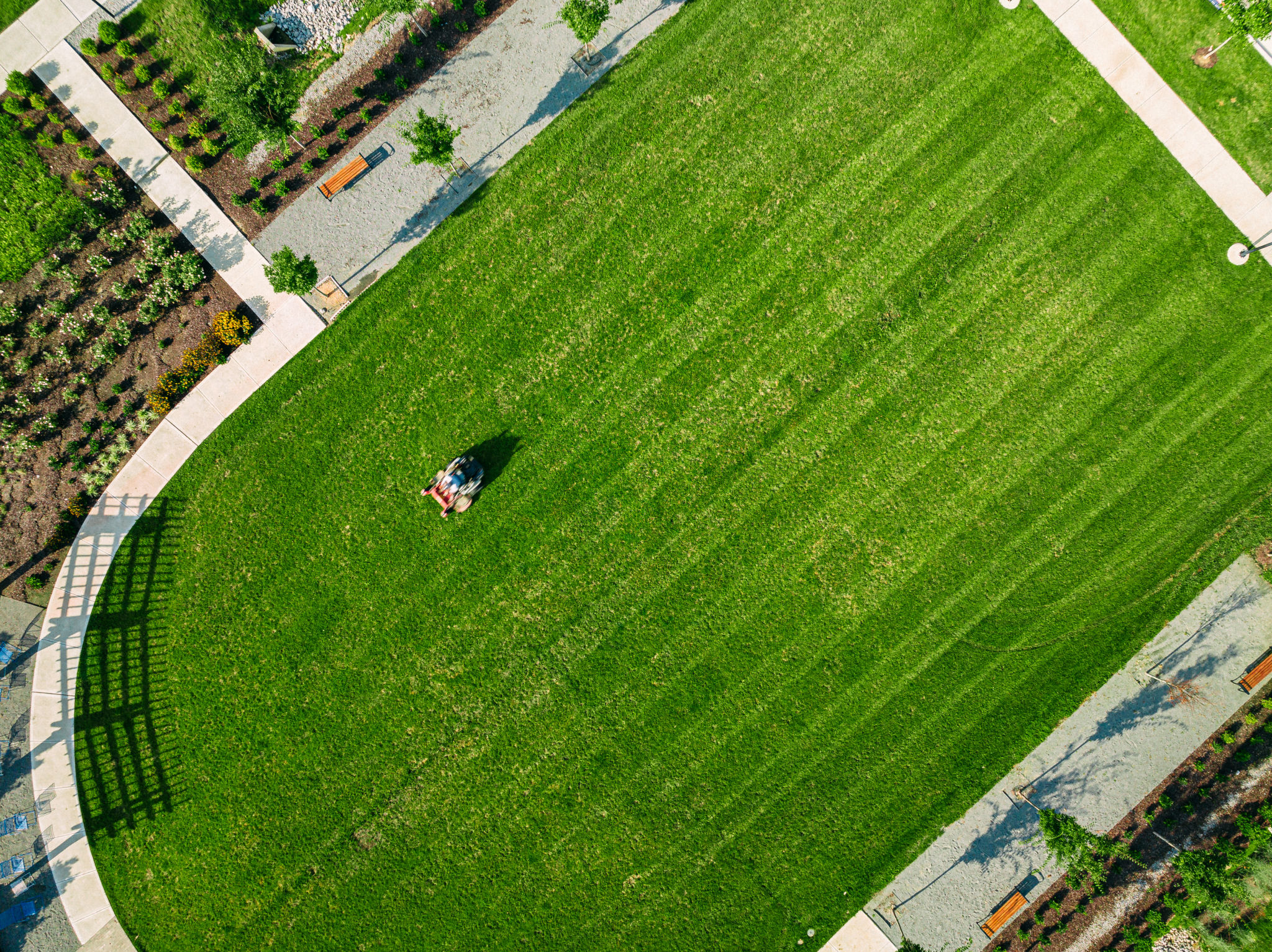DIY Lawn Care: Essential Tips for Maintaining Your Home Landscape
Understanding Your Lawn
Your journey to a lush, green lawn begins with understanding the unique needs of your landscape. Different grass types require different care, so it's essential to know what you're working with. Whether your lawn consists of cool-season grasses like Kentucky bluegrass or warm-season varieties such as Bermuda grass, each has specific maintenance requirements.
Before diving into lawn care tasks, assess the current state of your lawn. Look for signs of damage, such as bare patches or discoloration, which might indicate issues like pests or nutrient deficiencies.

Essential Lawn Care Tools
Having the right tools can make a significant difference in the effectiveness of your lawn care routine. Some basic tools every homeowner should have include a lawnmower, edger, rake, and a set of pruning shears. Investing in quality tools ensures that you can efficiently maintain your landscape throughout the seasons.
A lawnmower with adjustable height settings is particularly useful as it allows you to set the ideal cutting height for your grass type. Additionally, consider investing in a spreader for even distribution of fertilizers and seeds.
Mowing Techniques
Mowing is one of the most frequent tasks in lawn care. To keep your lawn healthy, follow these essential mowing tips:
- Avoid cutting more than one-third of the grass height at a time, as this can stress the plant.
- Change your mowing pattern regularly to prevent soil compaction and uneven growth.
- Keep mower blades sharp to ensure clean cuts and reduce damage to the grass.

Watering Wisely
Proper watering is crucial for maintaining a healthy lawn. It's best to water deeply and infrequently rather than lightly and often. This encourages deep root growth and makes your lawn more drought-resistant.
Early morning is the ideal time to water your lawn, as it reduces evaporation losses and allows the grass to dry before nightfall, minimizing the risk of fungal diseases. Be mindful of local weather conditions and adjust your watering schedule accordingly.
Fertilizing Your Lawn
Nutrients are vital for lush growth, and fertilizing is an essential part of any lawn care routine. Choose a fertilizer that matches your grass type and local soil conditions. It's often best to fertilize in the spring and fall when grass growth is at its peak.
Use a spreader for even application, and always follow the manufacturer's instructions on the fertilizer packaging to avoid over-fertilization, which can harm your lawn and local waterways.

Aeration and Seeding
Aeration involves perforating the soil with small holes to allow air, water, and nutrients to penetrate the grass roots. This process helps alleviate soil compaction and promotes healthier growth. Consider aerating your lawn at least once a year, typically in the fall or spring.
Seeding can help fill in bare spots and improve overall lawn density. After aeration, spread grass seed evenly across your lawn to enhance its appearance and health. Ensure you choose a seed mix suitable for your climate and existing grass type.
Managing Weeds and Pests
A well-maintained lawn is less susceptible to weeds and pests, but vigilance is still necessary. Hand-pulling or using mechanical tools can effectively manage weeds without resorting to chemical treatments. For persistent weed problems, consider spot-treating with an appropriate herbicide.
Similarly, monitor your lawn for signs of pest activity such as brown patches or chewed grass blades. Identifying pests early can help prevent significant damage and reduce the need for chemical interventions.

Seasonal Lawn Care Tips
Each season presents unique challenges and opportunities for lawn care:
- Spring: Focus on cleaning up debris and starting your fertilization schedule.
- Summer: Maintain consistent mowing and watering practices while watching for signs of heat stress.
- Fall: Aerate, seed, and apply a final round of fertilizer to prepare for winter.
- Winter: Minimize foot traffic on dormant grass to protect it until spring.
By following these DIY lawn care tips, you'll be well on your way to achieving a vibrant, healthy landscape that enhances your home's curb appeal year-round. Remember, consistency is key to maintaining the beauty of your lawn.